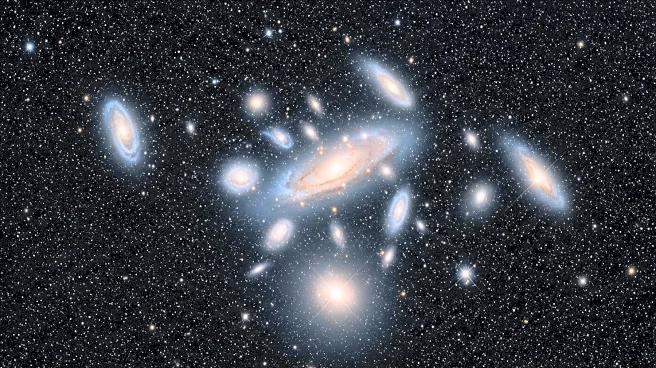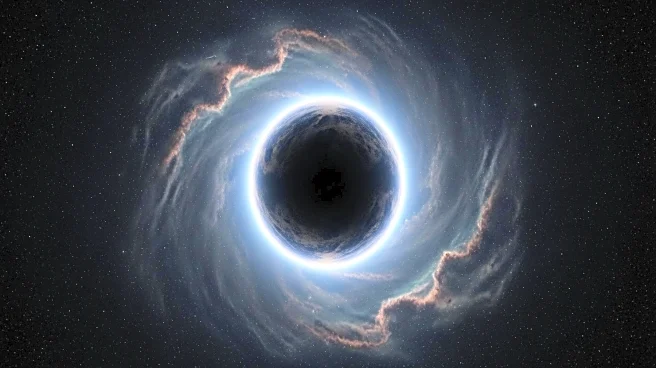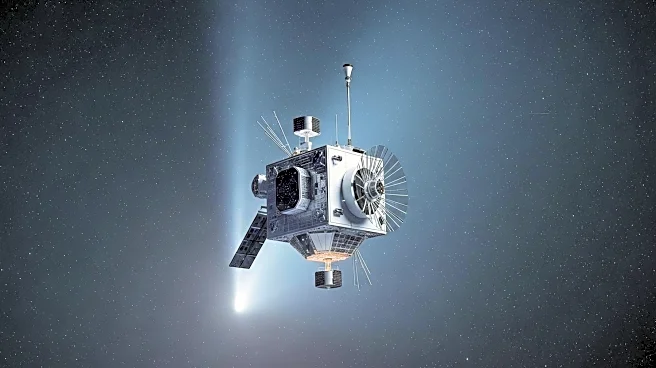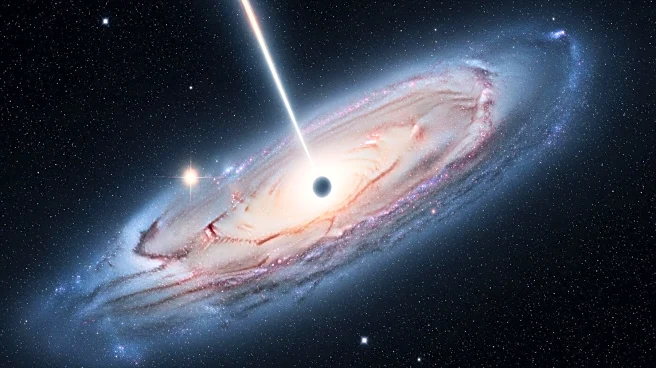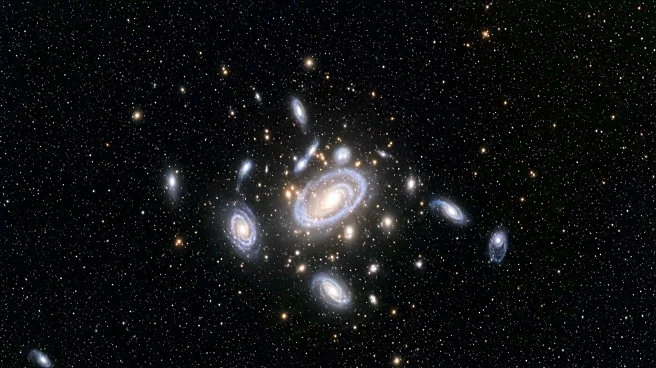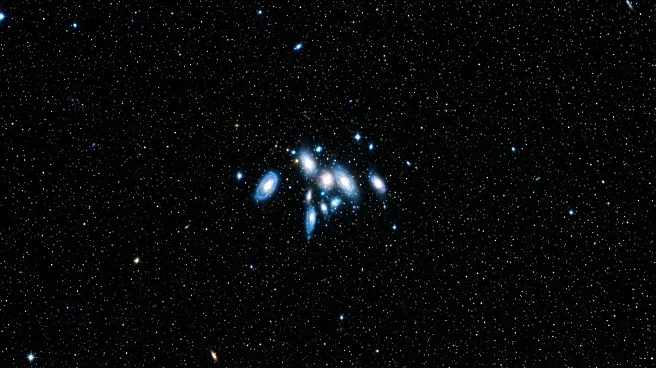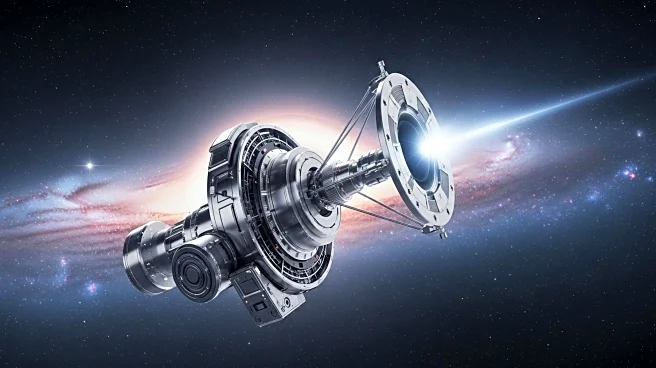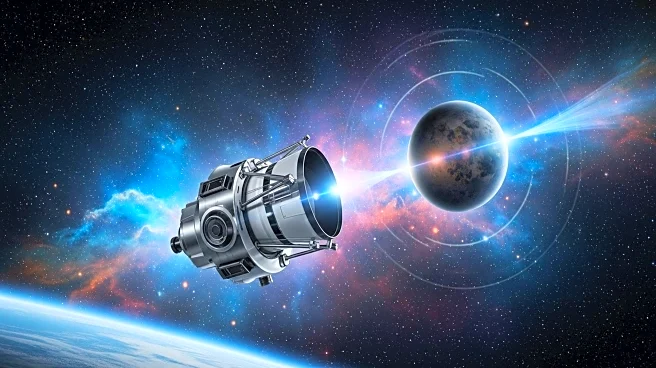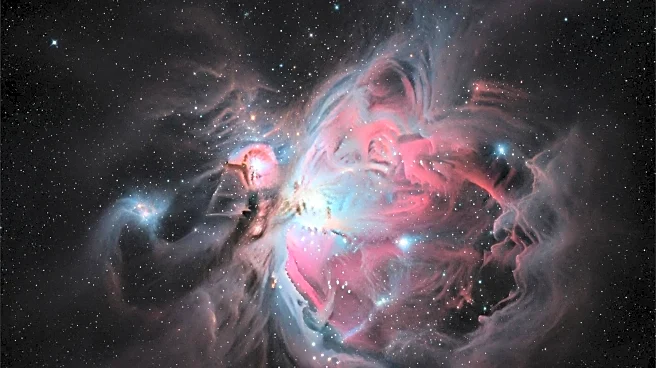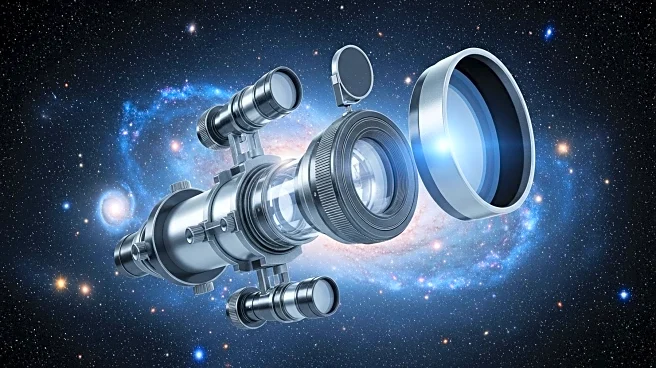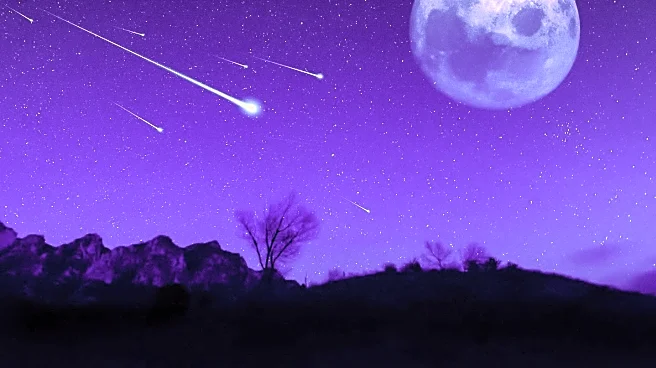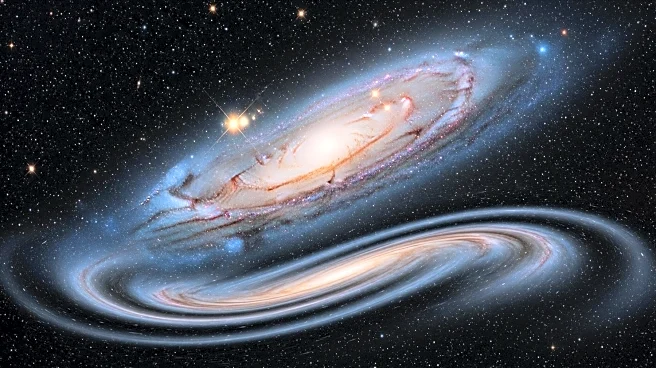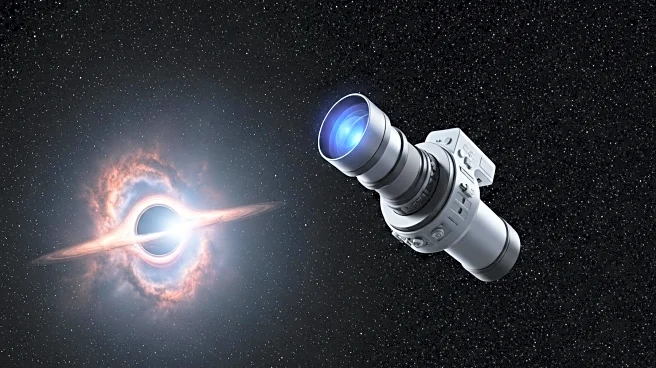What is the story about?
What's Happening?
Recent research utilizing data from the Hubble and James Webb Space Telescopes has identified small dwarf galaxies as the primary sources of ionizing photons that illuminated the early Universe. This discovery, published in February 2024, highlights the role of these galaxies in transforming neutral hydrogen into ionized plasma during the cosmic reionization period. The study, led by astrophysicist Iryna Chemerynska of the Institut d'Astrophysique de Paris, suggests that these ultra-faint galaxies played a crucial role in the evolution of the early Universe. The research team, including astrophysicist Hakim Atek, used data from a galaxy cluster called Abell 2744 to observe these dwarf galaxies, which were found to be more abundant and brighter than previously expected.
Why It's Important?
This discovery is significant as it challenges previous assumptions that larger galaxies or massive black holes were the primary sources of reionization. The findings suggest that dwarf galaxies, despite their small size, collectively emitted enough ionizing radiation to transform the state of the Universe. This insight into the early Universe's history could reshape our understanding of galaxy formation and evolution. The research underscores the importance of studying low-mass galaxies to comprehend the broader cosmic history, potentially influencing future astronomical research and theories about the Universe's development.
What's Next?
The research team plans to expand their study to other cosmic lens regions to ensure that their findings are representative of the entire population of galaxies during the cosmic dawn. This broader analysis could confirm the role of dwarf galaxies in reionization and provide further insights into the early Universe. The ongoing work with the James Webb Space Telescope is expected to continue unveiling new aspects of the Universe's formative years, potentially leading to more groundbreaking discoveries in astrophysics.
Beyond the Headlines
The implications of this research extend beyond astrophysics, as understanding the early Universe can inform other scientific fields about the fundamental processes that shaped the cosmos. The study also highlights the capabilities of modern telescopes like the James Webb Space Telescope in exploring distant cosmic phenomena, paving the way for future technological advancements in space observation.
AI Generated Content
Do you find this article useful?
